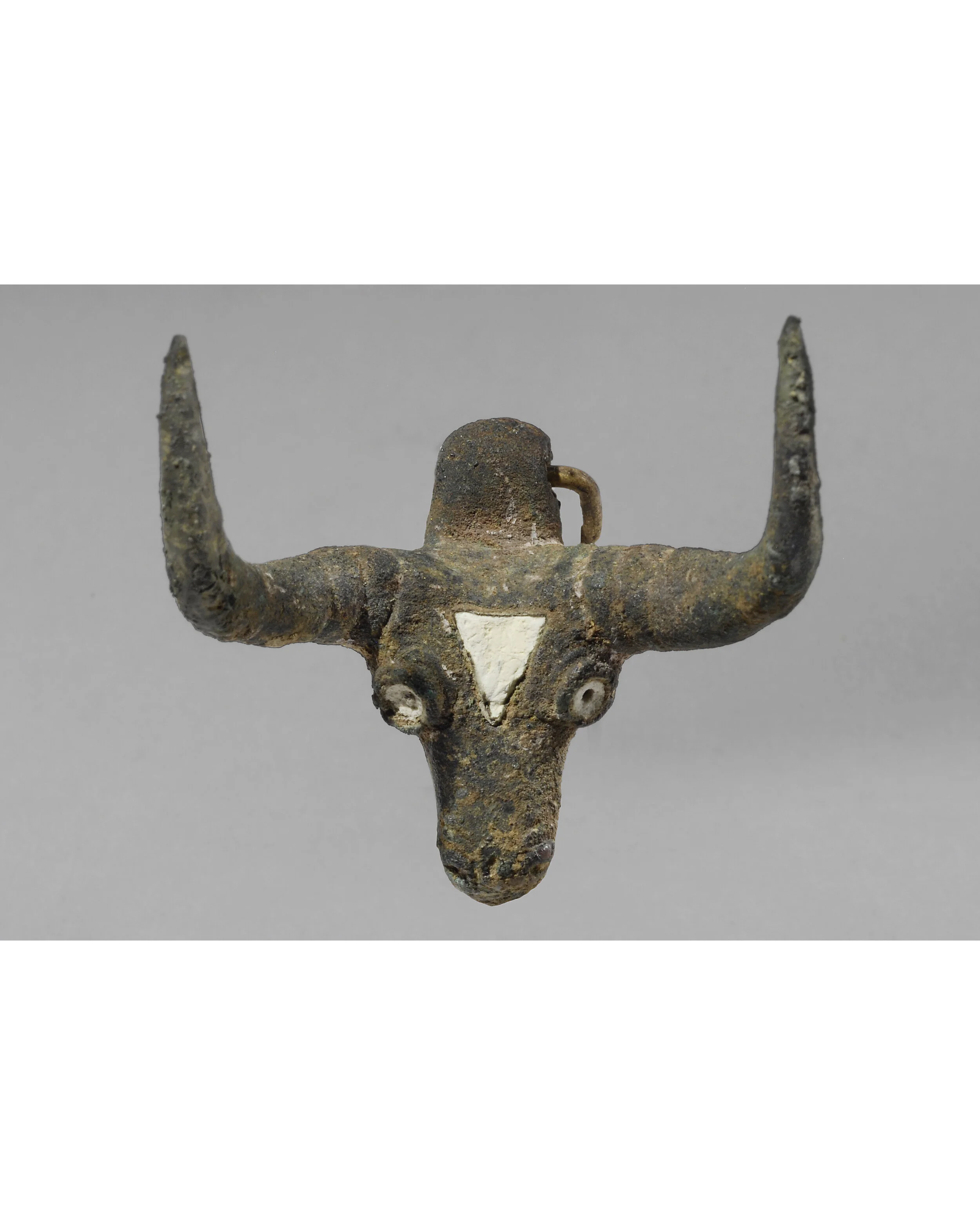Ancient Near Eastern Basalt Domestic Altar in the shape of a Bull
Ancient Near Eastern Basalt Domestic Altar in the shape of a Bull
Syro-Palestinian, late 2nd – early 1st millennium B.C.
Basalt
59 x 20 x 29.5 cm
Provenance: Private collection, acquired in the early 1980’s.
Published: Phoenix Ancient Art 2006-no. 1, Geneva-New York, 2006, no. 3
The altar is whole and in a good state of preservation, but the basalt surface is pockmarked; the tip of the right back foot is broken. Its height is above the average for such figures. The shape of this offering table resembles a bovid: the body of the animal is composed of a slightly concave rectangular table (the table of the altar) supported by four low, angular legs; the belly of the ox is convex and without details. The square protuberance, carved on one of the short sides, represents the head, but its forms are barely outlined. The upper part is concave, as if it were a second small offering table. The sculptor achieved a convincing effect, in spite of the simple shape, leaving no doubt about the interpretation of the object. As the style and especially the use of basalt prove, the origins of this piece are to be sought in the lithics industries of eastern Anatolia and northern Syria, where other similar altars were found. These altars may be connected with the god Teshub, whose sacred animal is the bull.
Bibliography
HROUDA B., Tell Halaf IV, Die Kleinfunde aus Historischer Zeit, Berlin, 1962, p. 71, n. 131-134, pl. 53.
MERHAV R. (éd.), Treasures of the Bible Lands, The E. Borowski Coll., Tel Aviv, 1987, n. 123.
REHM E., Kykladen und Alter Orient, Bestandkat. des Badisches Landesmuseums Karlsruhe, Karlsruhe, 1997, p. 36, A56, fig. 56, p. 381.










